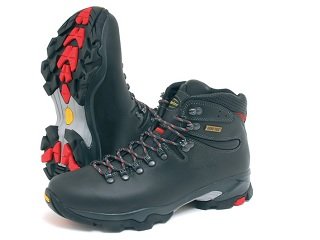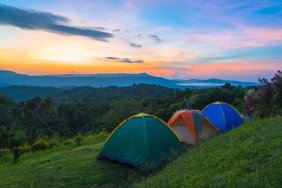 As far as backpacking goes, the boots you wear will be crucial in terms of your comfort and safety on potentially rugged, treacherous, and demanding terrain. As we explored in Parts One and Two of this series, there are different types of boots suited for specific types of excursions, ranging from hiking shoes for day hikes and casual walks on the trail to mid length, leather boots for longer trips with a backpack. Today, we’ll take a look at a few boots that are great for longer trips where constant walking and hill climbing under full pack load are the norm.
As far as backpacking goes, the boots you wear will be crucial in terms of your comfort and safety on potentially rugged, treacherous, and demanding terrain. As we explored in Parts One and Two of this series, there are different types of boots suited for specific types of excursions, ranging from hiking shoes for day hikes and casual walks on the trail to mid length, leather boots for longer trips with a backpack. Today, we’ll take a look at a few boots that are great for longer trips where constant walking and hill climbing under full pack load are the norm.
Zamberlan’s Vioz GT boots are great options if durability and comfort are a priority. Their uppers are comprised of a single piece of full-grain leather, while, internally, their Gore-Tex liners will keep your feet dry, warm, and comfortable as they wick away moisture. Even the tongues are made with comfort in mind, as they’re padded and gusseted to ease lace pressure and keep out trail debris. At $280, they’re on the high end of most budgets, but with top ratings and reviews from hundreds of customers, the price tag is well worth it.
The Rapace mountaineering boots, made by Salewa, are designed for rough, steep, rocky terrain where balance and traction are life-saving traits you’ll want in your boots. The boots are lightweight, which makes walking uphill in high altitudes a little easier on your legs. They’re also crampon compatible, due to nylon plates built into the stiff insoles. They are a little more expensive at $280, but they’re definitely a boot on the more serious side.
Lastly, we have a boot that’s made for comfort and stability through long hauls under full pack: Lowa’s Camino GTX. You won’t find a whole lot of bells and whistles here; just straight up hiking boot. A 2.2mm nubuck leather upper offers durability and good range of motion in your ankle. The midsoles are made of polyurethane, which grants you optimal cushioning, while the nylon shanks offer ideal support and protection. As expected with a product offering such great craftsmanship and durability, the price tag is high–$295—but you know that, with a boot like this, it’s worth the extra money.
There are hundreds of boots on the market today, and hopefully this series has helped open your eyes to a few choice models. As always, consider your budget and anticipated hiking activity when you’re looking for boots. Once you’ve narrowed the field down to a handful of options, you can start being picky with extras. Be safe and enjoy yourself on the trail, folks!








